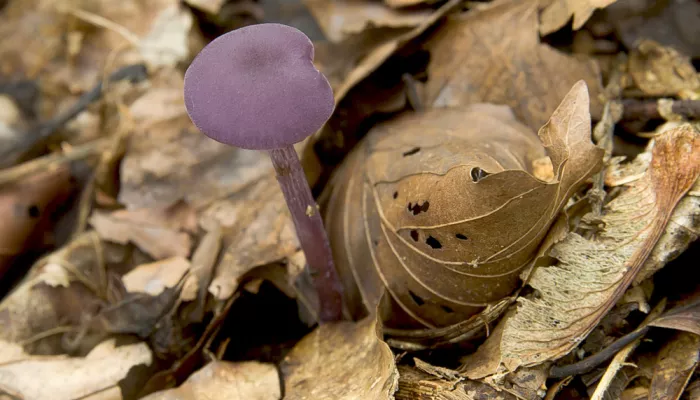| Statistics | |
|---|---|
| Cap diameter: | 1cm - 6cm |
| Stem height: | 4cm - 10cm |
The pretty-in-purple amethyst deceiver can be seen growing in the leaf litter of our woodlands during late summer and autumn. Although edible, it looks similar to the poisonous Lilac fibrecap.
About
The amethyst deceiver can be seen growing in broadleaved and coniferous woodlands among the leaf litter. It is edible, but is similar in appearance to the poisonous Lilac fibrecap; indeed, never pick and eat fungi that can you cannot positively identify. Fungi belong to their own kingdom and get their nutrients and energy from organic matter, rather than photosynthesis like plants. It is often just the fruiting bodies, or 'mushrooms', that are visible to us, arising from an unseen network of tiny filaments called 'hyphae'. These fruiting bodies produce spores for reproduction, although fungi can also reproduce asexually by fragmentation.
How to identify
A fairly small toadstool, the amethyst deceiver is bright purple in colour. It has lilac flesh and the gills are attached to the stem, widely spaced and are deep purple. The stem is covered in tiny, white hairs.
Did you know?
During dry spells, and as the amethyst deceiver gets older, its cap and stem become much paler in colour and can even turn white.
How people can help
Fungi play an important role within our ecosystems, helping to recycle nutrients from dead or decaying organic matter, and providing food and shelter for different animals. The Wildlife Trusts manage many nature reserves sympathetically for the benefit of all kinds of wildlife, including fungi: you can help by supporting your local Trust and becoming a member. Our gardens are also a vital resource for wildlife, providing corridors of green space between open countryside. Try leaving log piles and dead wood to help fungi and the wildlife that depends on it. To find out more about encouraging wildlife into your garden, visit our Wild About Gardens website: a joint initiative with the RHS.

